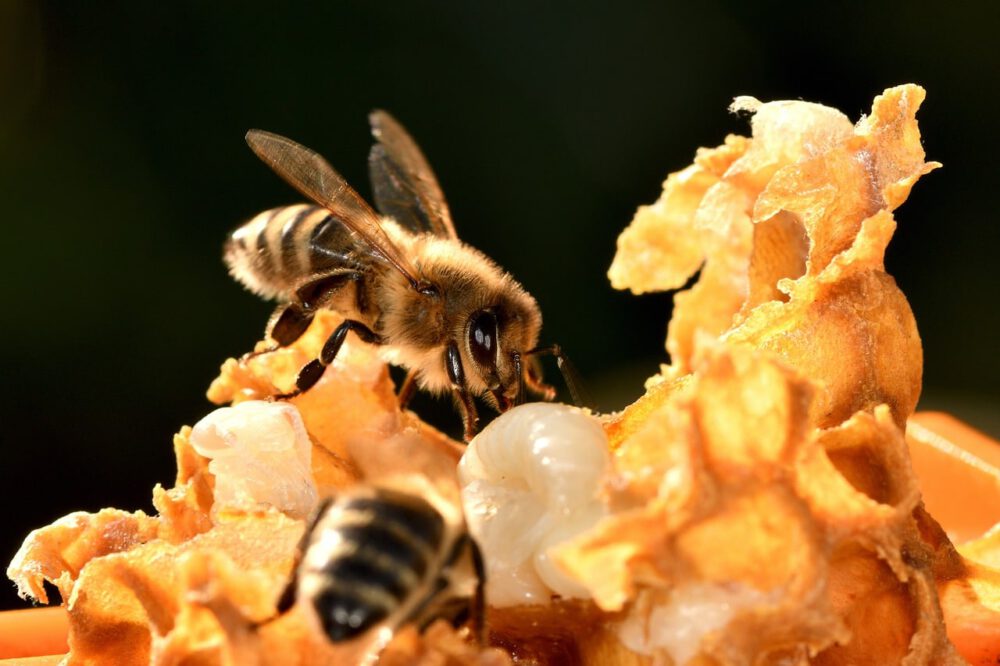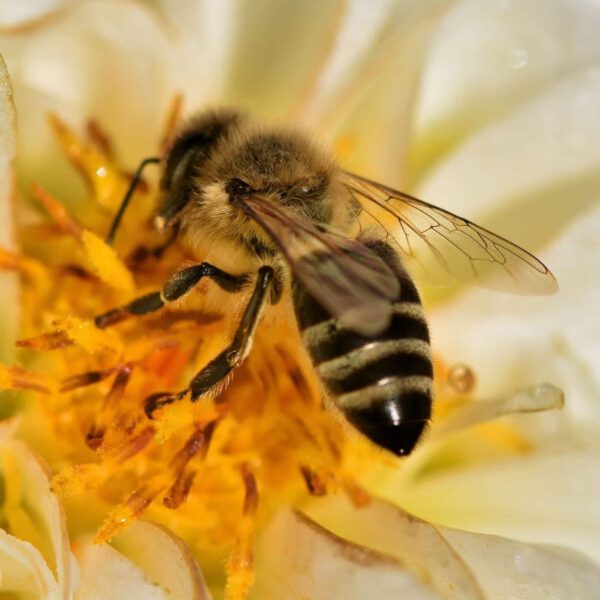The honeybee is a flying insect that is a relative of the wasp and the ant. And they are found everywhere but Antarctica.
Without insects to pollinate crops and wild plants, the flowers would not bloom. Trees would not flourish and reproduce, and the entire flora of the planet would decline rapidly. And as a part of that intricate system of pollen and seed disbursement, the honeybees are one of the most abundant and efficient in the world. Amazingly, that process increases the chances of fruit and vegetable production.
Honey Bee Facts
Honeybees are divided into three adult castes – Queen, drone, and worker. These bees live in colonies and cooperate for the good of the hive.
- The drones are for mating and do no real work around the hive.
- Honeybee workers essentially do all the work, caring for the larvae and Queen, pollination, and honey producing. And the workers are the bees with a barbed stinger attached to a poison sac. When they sting a person, the stinger detaches from the bee’s body, and the bee will die.
- As for the Queen, her main job is to take a nuptial flight, then retreat to the inner hive to lay eggs.

Honey Bee Appearance:
These bees have two wings, two antennae, and a three-segmented body. Most importantly, they have a proboscis similar to a straw to drink nectar deep in the flowers. Interestingly, they are covered with branched setae or feathery hairs. The pollen sticks to these hairs and is transferred to other flowers or is taken back to the hive.
The Queen has a smooth and elongated abdomen that extends well beyond her wings.
Workers are the smallest, and they have well-developed compound eyes and three simple eyes.
Diet:
Honey bees are entirely herbivorous. All their nutrition comes from the pollen and nectar they collect. And these bees are very busy indeed. In fact, they will visit over 2,000 flowers on a good day.
Reproduction:
Did you know a queen can lay as many as 2000 eggs each day at the height of productivity? But younger queens produce more eggs, while older ones may produce excessive drones. And while a queen bee may live for five years, they usually only lay eggs for three of those years.
In the hives, she will lay her eggs, and the workers will tend to the larvae.
Is the Honey Bee Dangerous?
According to PestWorld.org,
“Honey bees are not aggressive, and do not search for something to attack. Instead, they are defensive and will attack when they feel that the colony is threatened.”
That said, they do live in large colonies. So, if you have an unwanted hive in the yard, you may want to have it removed and relocated. Some people are allergic to bee stings. In those cases, they can be very dangerous, even fatal.

Covenant Wildlife Relocates Honey Bees
As we are, you may be in awe of the beauty of the honeybee and its unique benefits to the earth. However, we also understand you do not want a massive hive on your back porch or in the tree where your children play.
Did you know there are bee rescues and relocators? Covenant Wildlife Removal is one of the companies ready to assist when you need a beehive removed and relocated. You see, beekeepers are overjoyed to hear there is a nest being “rescued” and repurposed for conservation.
So, if you have a hive on your property, take the following notes and give Covenant Wildlife a call.
1. Please make sure they are indeed honeybees.
2. Note where they are located and what the hive is attached to.
3. If you know how long they have been there, it is good to indicate.
4. Compare the hive to the size of a ball or a fruit or the like.
5. Take photos of the hive and the area.
And please remember never to spray a beehive.
Covenant Wildlife Removal is a top-rated local family-owned, full-service wildlife trapping, removal, and repair service. We can remove a rat infestation before it becomes an extensive problem for you and your family.
Contact us or call 205-850-5760 to set up an inspection.

